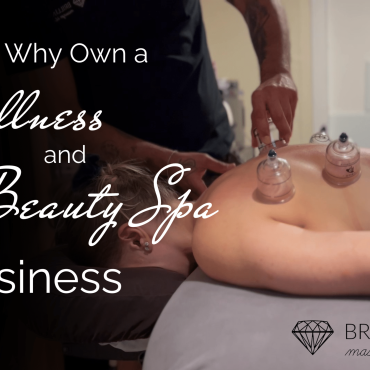Why mechanical facial exfoliants are not as good as chemical exfoliants?
The secret to smooth, radiant skin is cleansing. A good cleanser has the power to remove makeup, dirt, oil and other impurities from the surface of your skin to improve your complexion and keep your skin looking fresh. But what happens below the skin’s surface?
Exfoliation improves the appearance of your skin and provides the following benefits:
- It unclogs pores, improving the release of natural moisturizing oils.
- It removes pigment-containing skin cells to fade age spots.
- It minimizes the appearance of pores and scars in the upper layers of skin.
- It reduces the appearance of fine lines and wrinkles.
- It improves absorption of moisturizers and other skincare products.
- It helps reduce the frequency and severity of breakouts by unclogging pores.
- It improves collagen production to improve skin elasticity.
To keep your skin looking its best, exfoliation should be a regular part of your skincare routine. If you don’t currently exfoliate on a regular basis, however, it’s a technique that should be worked into your routine slowly.
Chemical vs. Mechanical Exfoliation
Mechanical or physical exfoliation involves using a hard substance to manually remove dead skin cells. You’ve probably used mechanical exfoliation products without even realizing it if you’ve used cleansers or other skincare products that contain microbeads.
Chemical exfoliation utilizes acids or enzymes to remove dead skin cells.
Chemical Exfoliants
- Alpha Hydroxy Acids (AHAs) — Typically used in light chemical peels, AHAs are derived from natural sources such as milk, fruit and sugar. Two of the most popular AHAs used in skincare products are lactic acid (derived from milk) and glycolic acid (derived from sugar).
- Beta Hydroxy Acid (BHA) — Also used in light chemical peels, BHA is also known as salicylic acid, and it is a synthetic derivative made from the same source as aspirin.
- Enzymes — Derived from natural sources like fruit, enzymes work in a similar way to acid-based exfoliants but at a slower pace which makes them very safe and gentle.
Mechanical (Physical) Exfoliants (not recommended for most people as main/daily exfoliator in general)
- Microbeads — Once used in a wide variety of exfoliating skin care products, microbeads are tiny plastic particles measuring less than one millimeter in diameter. When high concentrations of these microbeads were discovered in lakes and oceans, the government took action to start phasing them out of production. Very bad.
- Small Granules — Natural materials like jojoba seeds and ruby crystals are very small granules that are fairly uniform in size and shape which makes them an effective exfoliant with a lower risk of irritating or abrading the skin.
- Large Granules — More abrasive materials like pumice and magnesium oxide crystals form larger granules which can be used in exfoliating skincare products for people with thicker skin.
- Natural Materials — Though certain natural materials like ground fruit pits and seeds or crushed nutshells have an abrasive quality, their irregular shape and uneven edges can damage skin. Even cause scarring and brake outs, discoloration.
With the right products, exfoliation is something you can do at home. But how do you know which exfoliant to use? Keep reading to learn how to choose the best exfoliator for your skin type.
What is best exfoliant for your skin type?
- Acne-Prone Skin — If your skin is prone to breakouts, a harsh mechanical exfoliator may be too rough on your skin and might actually spread bacteria to make your breakouts worse. Instead, try a chemical exfoliator made with BHA and exfoliate no more than once a week.
- Dry Skin — Dry skin has trouble absorbing moisture, so you need an exfoliator that removes dead skin cells while also replenishing your skin’s natural moisture. Look for a product that contains both AHAs and BHA along with possibly tiny only granules like jojoba exfoliate your skin.
- Oily Skin — Generally speaking, oily skin has a higher tolerance for exfoliation, so you may be able to exfoliate up to five times a week, depending what product you choose. Look for an exfoliator that contains AHA or BHA and moisturize after exfoliating to avoid drying out your skin.
- Combination Skin — If you have an oily T-zone but dry skin on your cheeks and forehead, you might need an exfoliator that combines chemical and mechanical exfoliation. A product made with glycolic and salicylic acids that also can contains gentle exfoliating beads may work well.
- Sensitive Skin — For sensitive skin, you should avoid harsh skincare products like mechanical exfoliants and synthetic acids. Look for a chemical exfoliant that contains natural enzymes like a fruit enzyme peel or one that contains lactic acid to gently exfoliate with minimal irritation.
- Aging Skin — As you get older, your skin’s rate of cell turnover slows down, which can leave your skin looking dull. A chemical exfoliator featuring glycolic acid will help slough off dead skin cells without stripping your skin’s natural moisture. It will also help boost collagen production while reducing pigmentation and age spots.
- Healthy Skin — If you have normal skin with few problems, you have more freedom to experiment with both chemical and mechanical exfoliants to see which you like best.
You should also apply a lightweight, broad-spectrum sunscreen (if you’re exfoliating in the morning) because your skin will be extra-sensitive for a little while and in need of an added layer of protection.
If you’re struggling with dull complexion, clogged pores or fine lines and wrinkles, exfoliation could be your secret to smoother, more radiant skin.
Even if you choose the right exfoliator for your skin, you still need to be careful not to overdo it.
Brilliant Massage & Skin,
Burlington, Vermont


